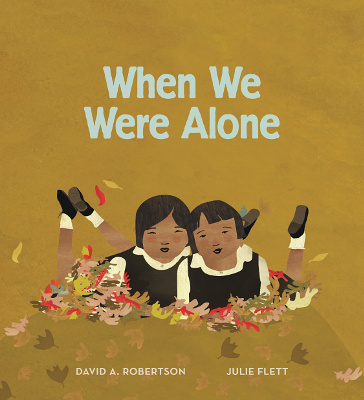 First Published: 1st March, 2017
First Published: 1st March, 2017
Genre: Children’s Contemporary Fiction / Picture Book
Available: Amazon.com | Amazon UK
A young girl helps her kókom (grandmother) in the garden. She asks her kókom questions, and the answers go back to the time when her kókom was sent away to school.
This book deals with the history of residential schools for Native American children. The focus is on the attempts to stop the children from practising their culture. They weren’t allowed to have long hair or speak Cree at the school. Everything they were not allowed to do was to make them like everyone else (in other words, like white people), but the children fought back in small ways by doing the forbidden things when they were alone.
The story of the school is told through the young girl asking questions, such as asking why her kókom has long hair, and being told about the school cutting the children’s hair. This makes it a generally positive book, as her kókom survived and is able to live as she wants. However, there are also hints that it’s not all in the past. The girl doesn’t face being taken away from her family and community, but she lives in a world where most people in the media will be white, and someone like her kókom is seen as different. There’s that unspoken implication to the questions of the pressure still being there, because those questions wouldn’t be raised if the girl’s family was considered to be like everybody else.
The pictures look like collages, with additional painting and drawing for detail and texture. It creates a bold and colourful feel, which works well with the theme of the girl’s kókom dressing brightly and not being afraid to show her culture. My favourite page is the flying bird with the Cree text around it (the words repeated from the main story), as it feels like a celebration. Despite all of the attempts, the girl and her kókom are free to speak as they want to speak.
I enjoyed this book. It’s a quiet and subtle handling of the topic. The art and story are a good match. It is perhaps a little too subtle for readers who don’t already know the history of the residential schools. For example, the text doesn’t make it clear who made the children go to the school. This could be something to discuss with readers after finishing the book.
[A copy of this book was received from the publisher for review purposes]
 First Published: 1st April, 2006
First Published: 1st April, 2006